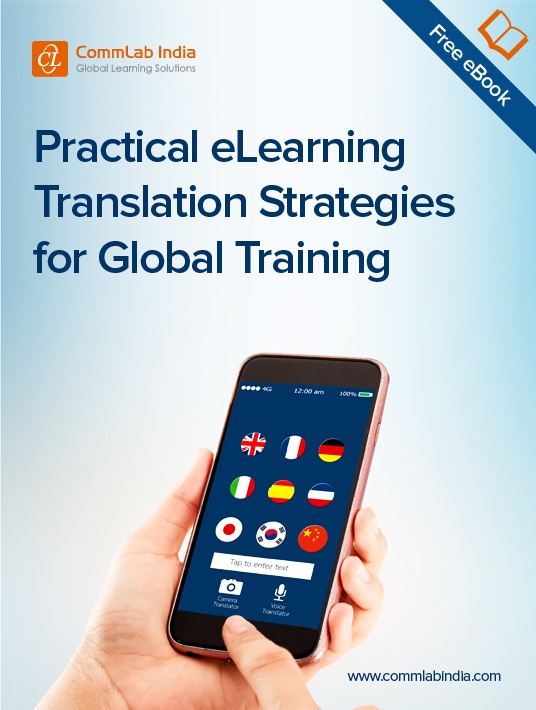How To Ensure Effective Global Training
Training a globally dispersed workforce means having uniform online training. Consequently, creating an eLearning course for such training means that it has to be translation-friendly. People today work in dispersed and remote work environments and chances are, they are comfortable with a language other than English.

To cater to such learners, the content of an online course has to be translated into multiple languages using impeccable translation services. Apart from this, translation has to take into account the cultural context, which in eLearning terms means localization. This is the process of adapting the content to a different culture or specific region of the world. Understanding the cultural context is important if the training has to be culturally appropriate.
Translation of courses is not a simple process. Access this eBook that offers detailed insights into translating online courses. Similarly, localization of the course should ensure that you retain its original meaning and objectives and that it is perfectly suited to meet the needs of the local people and in line with their culture. In fact, translation is part of the localization process, but is given importance because it deals with language, which is a significant aspect of any culture.
Translation and localization ensure that training reaches multiple locations and is relevant to each location. For this, the course should be linguistically and culturally appropriate to the target audience. Familiarity with the culture, subject matter expertise, and a good presentation style are essential.
You need to get the translation and localization right to train your global audience. Here are some strategies you can consider to make it a success.
1. Use International Formats
Use international English to develop the content of your course. Use globally accepted formats for numbers, dates, currencies, images, and graphics. The original course in English should allow room for the adoption of nuances of different cultures during translation. Ensure that your course uses geo-specific terminology. This means the translation should adhere to the standards of the local language in terms of language, subject matter, and style.
An understanding of the language and customs associated with your target learners is crucial; use humor carefully because it is culture-centric. What is funny in one country may be offensive in another. Avoid slang, idioms, puns, acronyms, metaphors and similes which may be difficult to translate or baffle translators and confuse non-native speakers.
The main course should be so designed that the translator finds it easy translate the course to the minutest detail, including industry-specific terminology.
2. Choose Right Visuals And Graphics
Apart from the language, you need to carefully select visuals and graphics, to avoid confusing or offending your target audience with inappropriate and insensitive images. Ensure visuals and graphics are culturally neutral. Be cautious in your choice of visuals – avoid cultural and religious symbols. They might be offensive or inappropriate in the translated course.
This will also save you time and expenses when you rework them for global versions. Get to know more about such strategies in the free eBook on global eLearning strategies.
3. Ensure Accurate Localization
Localization is not just changing the language of all textual elements but includes making design and visual modifications. It is the process of adopting the course to different cultures. For this, the course content should be culturally-sensitive. Use the right examples and explanations that are relevant to specific countries.
The content should be reviewed by native speakers who have an idea of the cultural sensitivities of the geographical location and can check for cultural relevance. They should be well versed with the local language. These experts can review the course and point out aspects that would be inappropriate to the target learners. This will make localization successful and help diverse learners benefit from the course.
Understanding your target audience, including their geographic location and associated customs is critical when you have to create multiple language versions of your online course. The task becomes easier when you choose a translation partner with an extensive expertise who can help you with a well-planned strategy that will ensure the quality and reliability of translation.
Related Articles:
- 6 Translation Strategies You Can’t Afford To Ignore
- Free eBook: Practical eLearning Translation Strategies For Global Training
- 6 Qualities To Look For In eLearning Translation Vendors
- 5 Tools To Make eLearning Translation Easy









